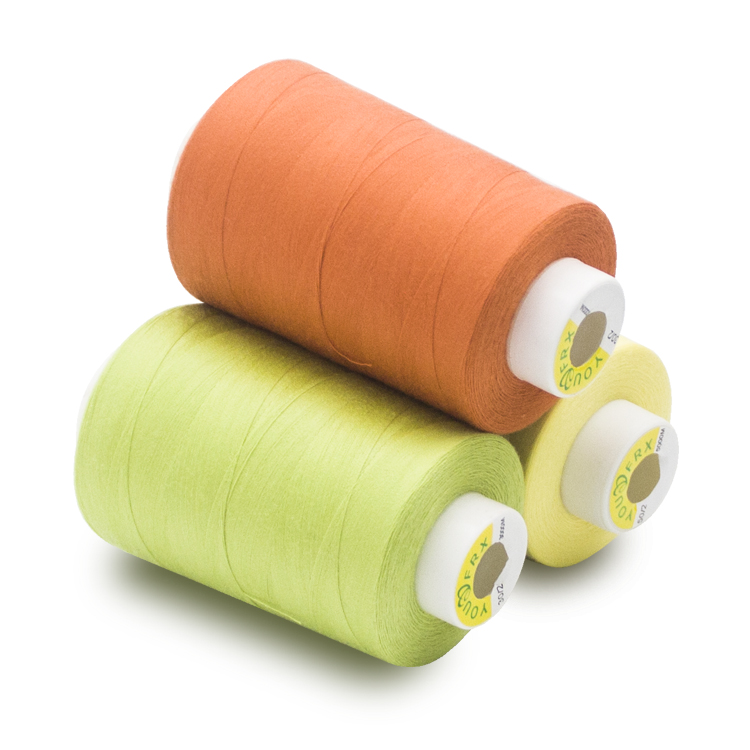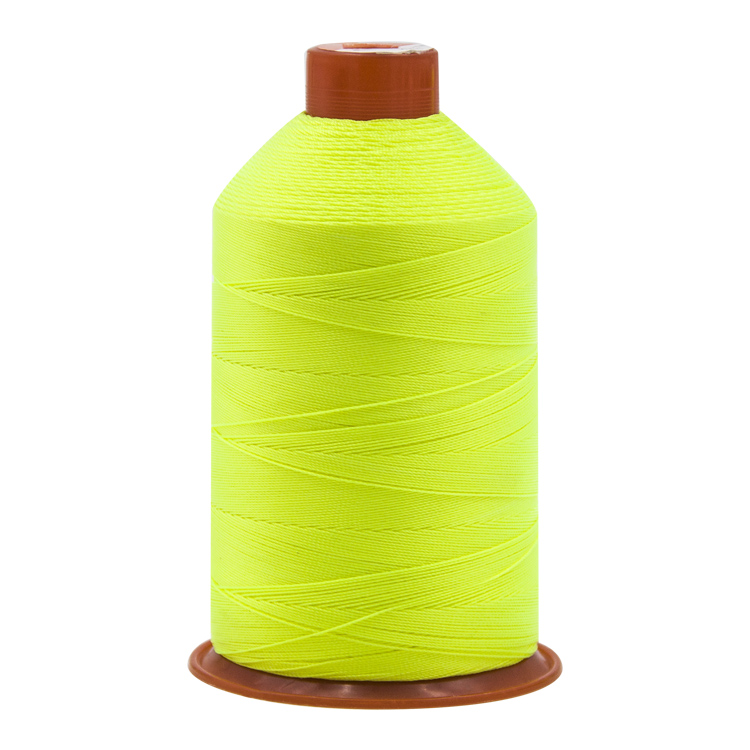
Detection method of phenol yellowing of sewing thread(2/2)
2.1.2.4 Rating
If the control cloth has yellowed, it shows that phenolic compounds and NO2 exist simultaneously, and they are in contact, so the test is successful. The yellowing degree can be evaluated by ISO standard stained grey card. The series of grey cards are "1, 1-2, 2, 2-3, 3-4, 4, 4-5 and 5". The higher the series, the less obvious the color change, that is, the less obvious the yellowing. Comparing the test sample with the original one, the nearest difference between the test sample and the gray card is its rating. According to the AATCC standard, grade 4 to 5 or above can meet the commercial requirements.
2.2 Practical application
The phenol yellowing of the original sewing thread (untreated) of 30tex * 2 polyester sewing thread and its five kinds of after-treated yarns were detected by the above-mentioned method. Five kinds of finishing are fluorescent whitening treatment, upper PL100 oil agent, upper emulsified oil, fluorescent whitening and upper PL100 oil agent and fluorescent whitening and upper emulsified oil, of which the first three are single finishing and the last two are compound finishing. The results are shown in Table 1.
From Table 1, it can be seen that the phenol yellowing of untreated and single-finished polyester sewing threads occurs slightly, and the yellowing degree is grade 4. The yellowing degree of the compound-treated polyester sewing threads is grade 3-4. Therefore, when packaging polyester sewing thread, we should choose plastic film without antioxidant (such as BHT) and carton without phenolic preservative.

Conclusion
Sewing thread is an important textile accessory material. It is very important to analyze the cause of yellowing and to explore the test method of phenol yellowing for exploring measures to prevent yellowing of sewing thread.
The practice of phenol yellowing detection of polyester sewing thread shows that: (1) parallel and tightly arranged samples of sewing thread can be prepared by using a blackboard shaker; (2) the method discussed in this paper can be used to detect phenol yellowing of sewing thread conveniently and accurately.




